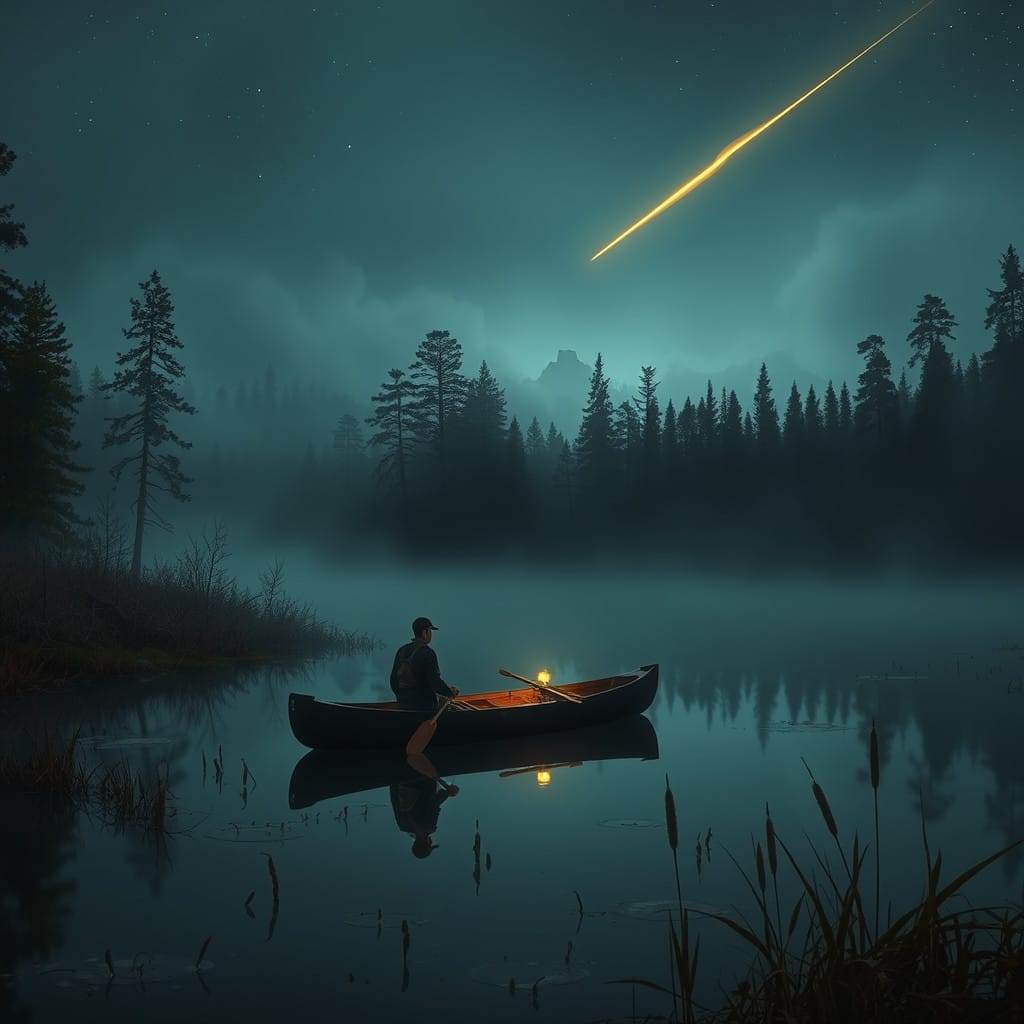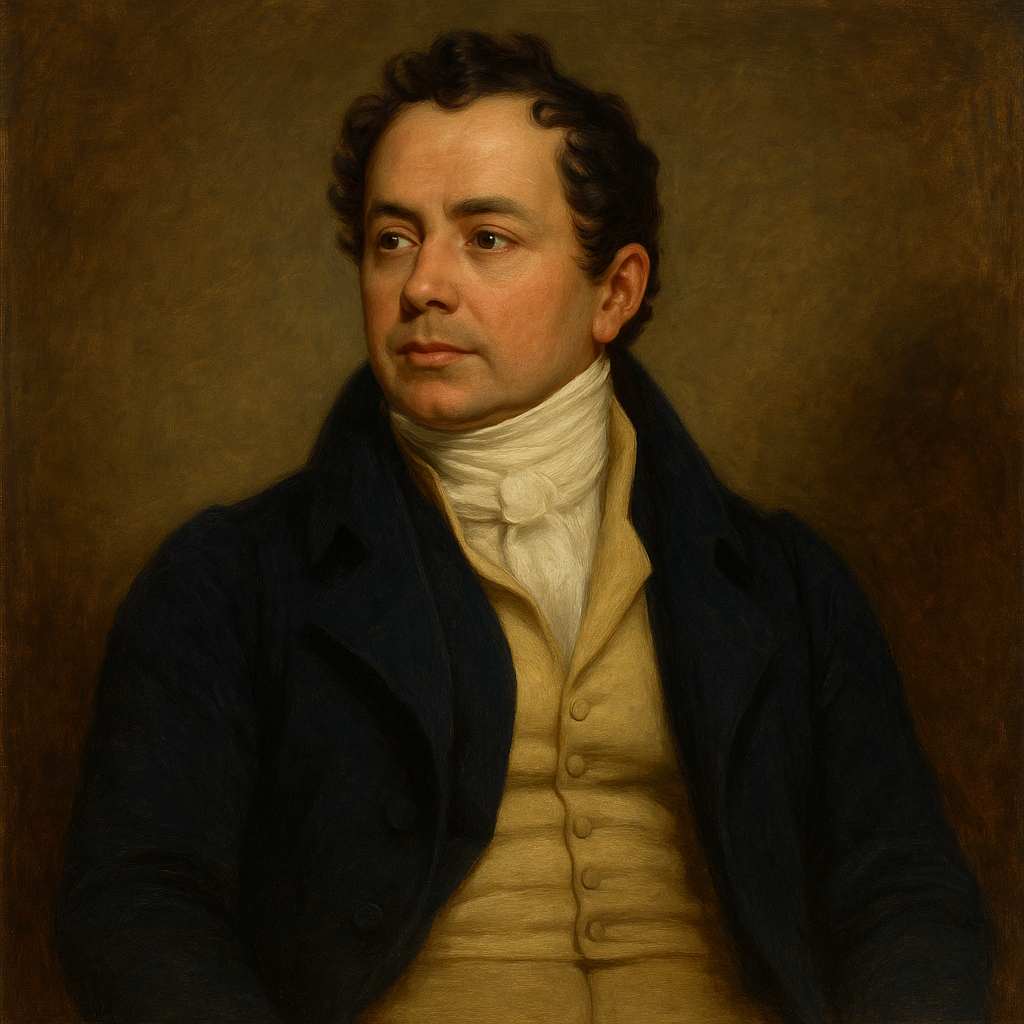The Lake of the Dismal Swamp
Thomas Moore
1779 to 1852

Want to track your favorites? Reopen or create a unique username. No personal details are required!
Written at Norfolk, in Virginia
“They made her a grave, too cold and damp
For a soul so warm and true;
And she’s gone to the Lake of the Dismal Swamp,
Where, all night long, by a fire-fly lamp,
She paddles her white canoe.
“And her fire-fly lamp I soon shall see,
And her paddle I soon shall hear;
Long and loving our life shall be,
And I’ll hide the maid in a cypress tree,
When the footstep of death is near.”
Away to the Dismal Swamp he speeds—
His path was rugged and sore,
Through tangled juniper, beds of reeds,
Through many a fen where the serpent feeds,
And man never trod before.
And when on the earth he sunk to sleep,
If slumber his eyelids knew,
He lay where the deadly vine doth weep
Its venomous tear and nightly steep
The flesh with blistering dew!
And near him the she-wolf stirr’d the brake,
And the copper-snake breath’d in his ear,
Till he starting cried, from his dream awake,
“Oh! when shall I see the dusky Lake,
And the white canoe of my dear?”
He saw the Lake, and a meteor bright
Quick over its surface play’d—
“Welcome,” he said, “my dear one’s light!”
And the dim shore echoed for many a night
The name of the death-cold maid.
Till he hollow’d a boat of the birchen bark,
Which carried him off from shore;
Far, far he follow’d the meteor spark,
The wind was high and the clouds were dark,
And the boat return’d no more.
But oft, from the Indian hunter’s camp,
This lover and maid so true
Are seen at the hour of midnight damp
To cross the Lake by a fire-fly lamp,
And paddle their white canoe!
Thomas Moore's The Lake of the Dismal Swamp
Thomas Moore’s poem The Lake of the Dismal Swamp is a Romantic ballad that weaves themes of love, death, and the supernatural into a haunting narrative set in the evocative landscape of the Dismal Swamp in Virginia. This analysis will explore the poem's thematic elements, use of poetic devices, and its cultural and historical resonance.
Introduction
In The Lake of the Dismal Swamp, Moore constructs a melancholic tale of undying love that transcends death, couched in the eerie, gothic setting of the titular swamp. Through vivid imagery and a rhythmic balladic form, Moore immerses the reader in a world where nature mirrors the passions and torments of the human heart. The poem is heavily influenced by Romanticism, with its emphasis on emotional intensity, the supernatural, and a profound connection to the natural world.
Form and Structure
The poem is written in ballad form, adhering to a quatrain structure with an ABAB rhyme scheme. The meter is predominantly iambic, lending the poem a musical quality typical of ballads. This regularity contrasts with the unsettling content, emphasizing the tension between the familiar rhythm of life and the disquieting mystery of death and the supernatural.
The refrain-like imagery of the "white canoe" and the "fire-fly lamp" functions as a recurring motif, reinforcing the cyclical, haunting nature of the story. The narrative progresses in a linear fashion but spirals back to the eternal presence of the lovers on the lake, creating a sense of timelessness.
Themes
Love and Loss
The poem’s central theme is the enduring power of love, even in the face of death. The unnamed lover's devotion drives him to journey through treacherous terrain, culminating in his disappearance as he follows the spectral light of his beloved’s "fire-fly lamp." Their union in the afterlife suggests a Romantic ideal: love so profound it defies mortality.
Death and the Supernatural
The ghostly atmosphere of the Dismal Swamp serves as the perfect backdrop for the poem’s supernatural elements. The image of the "death-cold maid" paddling her canoe transforms the swamp into a liminal space between life and death. The meteor and firefly light evoke otherworldly guidance, emphasizing the metaphysical connection between the lovers.
Nature as a Reflection of Emotion
Nature is more than a setting in this poem; it becomes a character, reflecting the protagonist’s anguish and the poem’s eerie tone. The "tangled juniper," "beds of reeds," and "deadly vine" symbolize the dangers and trials of love, while the "dusky Lake" represents mystery and the unknown.
Imagery and Symbolism
Moore’s rich imagery enhances the poem’s gothic tone:
- The Dismal Swamp: A foreboding, untamed wilderness symbolizes the lover’s inner turmoil and the boundary between life and death.
- The White Canoe: A ghostly vessel representing the soul’s journey in the afterlife, it serves as a poignant emblem of the couple's enduring love.
- The Fire-Fly Lamp: A fragile yet persistent light symbolizes hope and the guiding power of love amid darkness.
- The Meteor Bright: Suggestive of a fleeting but powerful connection, the meteor may represent the lover’s spiritual reunion with his beloved.
These symbols intertwine to create a vivid and resonant portrait of love’s resilience against the backdrop of a gothic landscape.
Romantic Context
Moore's poem is steeped in Romanticism, characterized by its fascination with the sublime, nature’s power, and the supernatural. The Dismal Swamp itself had become a Romantic symbol in its own right by the early 19th century, seen as both mysterious and melancholic. Moore, an Irish poet, imbues the American setting with a universal quality of longing and despair, blending local folklore with broader Romantic ideals.
Conclusion
The Lake of the Dismal Swamp exemplifies the Romantic ballad tradition, combining poignant themes of love and loss with a richly atmospheric setting. Moore’s deft use of form and imagery crafts a timeless tale of devotion that resonates with readers as both a ghost story and a meditation on the enduring power of love. The poem's haunting beauty lies in its ability to evoke deep emotional responses while leaving the lovers’ ultimate fate shrouded in mystery, much like the swamp itself.
This text was generated by AI and is for reference only. Learn more
Want to join the discussion? Reopen or create a unique username to comment. No personal details required!



Comments
No comments yet. Be the first to comment!